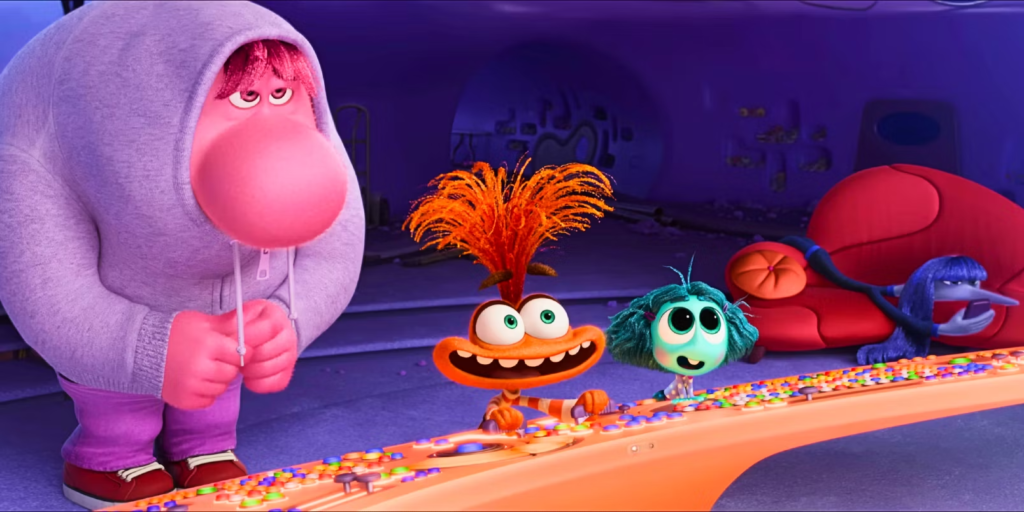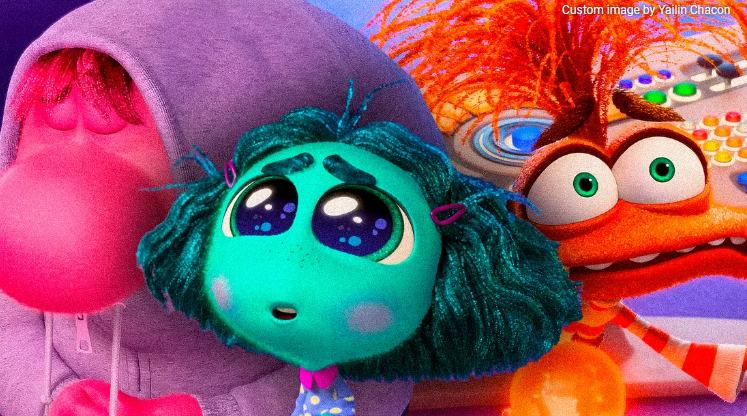In the world of animated films, Pixar’s Inside Out has been a groundbreaking achievement, offering a heartfelt exploration of the emotions within a young girl’s mind. The film’s portrayal of Joy, Sadness, Anger, Fear, and Disgust resonated with audiences of all ages, providing a unique lens through which to view the complexities of human emotion. With the announcement of Inside Out 2, fans are eagerly anticipating the introduction of new emotions, promising to deepen our understanding of the mind’s inner workings.
A Recap of Inside Out: Setting the Stage for New Emotions
Before diving into the anticipated additions, it’s worth revisiting the original film’s emotional cast. Joy, voiced by Amy Poehler, is the exuberant leader, always striving to keep Riley, the young protagonist, happy. Sadness, portrayed by Phyllis Smith, brings a more melancholic perspective, essential for authentic emotional experiences. Anger, voiced by Lewis Black, Fear by Bill Hader, and Disgust by Mindy Kaling, complete the team, each contributing to Riley’s emotional balance.
The film’s brilliance lies in its ability to personify these emotions, turning abstract concepts into relatable characters. As Riley navigates the challenges of moving to a new city, the interplay between Joy and Sadness underscores the necessity of experiencing a full range of emotions for personal growth.

Anticipating Inside Out 2: New Emotions on the Horizon
As Inside Out 2 approaches, the buzz around the introduction of new emotions has sparked widespread curiosity. The inclusion of these new emotions is expected to offer fresh perspectives on Riley’s evolving emotional landscape as she transitions from childhood to adolescence.
1. Empathy: Bridging the Emotional Gap
One of the most speculated new additions is Empathy. Unlike the original emotions that primarily focus on Riley’s internal experiences, Empathy could represent the ability to understand and share the feelings of others. This addition is particularly relevant as Riley enters her teenage years, a period marked by complex social interactions and heightened sensitivity to others’ emotions.
Empathy’s presence in Inside Out 2 could provide valuable lessons on the importance of emotional intelligence and interpersonal connections. By personifying Empathy, Pixar has the opportunity to explore how understanding others’ emotions can lead to stronger, more meaningful relationships.

2. Curiosity: Fueling the Drive for Knowledge
Another exciting potential addition is Curiosity. As Riley grows, her quest for knowledge and exploration intensifies. Curiosity could embody the driving force behind her desire to learn, discover, and understand the world around her. This emotion would likely play a significant role in navigating the challenges and opportunities that come with adolescence.
Curiosity’s interactions with other emotions could provide insightful commentary on the balance between seeking new experiences and managing the risks and fears associated with them. By introducing Curiosity, Inside Out 2 could emphasize the importance of maintaining a sense of wonder and openness to new ideas.
The Impact of New Emotions on Riley’s Journey
The introduction of new emotions in Inside Out 2 promises to add depth to Riley’s emotional journey. As she faces the complexities of growing up, these new emotions will likely interact with the original cast in dynamic and sometimes unexpected ways.
1. Empathy’s Role in Conflict Resolution
In the first film, we saw how Joy and Sadness eventually learned to work together, highlighting the importance of embracing all emotions. With the addition of Empathy, Inside Out 2 can delve deeper into conflict resolution. Empathy’s ability to understand and share others’ feelings could serve as a mediator, helping Riley navigate interpersonal conflicts with friends, family, and peers.
This new dynamic could lead to powerful storytelling moments, illustrating how empathy can transform misunderstandings into opportunities for connection and growth. By showcasing Empathy’s role, the film can teach valuable lessons about compassion and the importance of seeing things from others’ perspectives.

2. Curiosity’s Influence on Personal Growth
Curiosity’s introduction could significantly impact Riley’s personal development. As an emotion that drives exploration and learning, Curiosity can encourage Riley to step out of her comfort zone and embrace new experiences. This could be particularly relevant as she navigates the challenges of adolescence, from academic pursuits to social adventures.
Curiosity’s interactions with Fear, in particular, could be intriguing. Fear’s protective nature often holds Riley back from potential risks, but with Curiosity’s influence, the film could explore the delicate balance between caution and exploration. This dynamic can highlight the importance of taking calculated risks and learning from both successes and failures.
Visual and Thematic Innovations
Beyond the narrative implications, the introduction of new emotions in Inside Out 2 offers exciting opportunities for visual and thematic innovation. Pixar is known for its attention to detail and creative storytelling, and these new emotions provide a fresh canvas for artistic expression.
1. Visual Representation of Empathy and Curiosity
Empathy and Curiosity, as abstract concepts, present unique challenges and opportunities for visual representation. Empathy might be depicted through a warm, inviting color palette, with fluid, gentle movements symbolizing understanding and connection. In contrast, Curiosity could be characterized by vibrant, dynamic visuals, reflecting the excitement and energy of exploration.

These visual cues can enhance the audience’s emotional engagement, making the abstract concepts more tangible and relatable. By creatively depicting these new emotions, Pixar can deepen the viewers’ connection to Riley’s inner world.
2. Thematic Exploration of Emotional Complexity
The addition of new emotions also allows for a richer thematic exploration of emotional complexity. Inside Out 2 can delve into nuanced topics such as the interplay between different emotions, the evolution of emotional responses over time, and the impact of external factors on internal experiences.
For instance, Empathy’s role in fostering social bonds can lead to themes of community and belonging, while Curiosity’s drive for discovery can underscore the importance of lifelong learning and adaptability. These themes resonate not only with children but also with adults, making the film a multi-layered experience for audiences of all ages.

Conclusion: A New Chapter in Emotional Storytelling
As we eagerly await the release of Inside Out 2, the introduction of new emotions like Empathy and Curiosity promises to enrich the film’s emotional landscape. These additions offer exciting opportunities for narrative and visual innovation, allowing Pixar to continue its tradition of heartfelt, thought-provoking storytelling.
Through the lens of these new emotions, Inside Out 2 can provide valuable insights into the complexities of growing up, the importance of emotional intelligence, and the power of understanding and embracing our full range of feelings. By expanding the emotional cast, the film not only continues Riley’s journey but also invites audiences to reflect on their own emotional experiences, fostering a deeper appreciation for the intricacies of the human mind and heart.
In a world where understanding and empathy are more important than ever, Inside Out 2 has the potential to be a timely and impactful addition to the Pixar legacy. As we look forward to experiencing this new chapter, we can anticipate a film that not only entertains but also enlightens, reminding us of the beauty and complexity of our inner emotional world.


